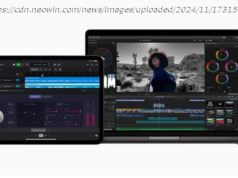Nvidia’s DLSS technology offers a huge boost to PC games, but how does it work, exactly? Here’s everything you need to know about DLSS and what it can do.
Nvidia has two standout features on its RTX 30-series and RTX 40-series graphics cards: ray tracing and DLSS. The PlayStation 5 and Xbox Series X have both done a good job of introducing most people to ray tracing, but DLSS is still a little nebulous. It’s a little complex, but it lets you play a game at a virtualized higher resolution, maintaining greater detail and higher frame rates without taxing your graphics card as much. It gives you the best of all worlds by harnessing the power of machine learning, and with the introduction of DLSS 3, the technology just got even more powerful.
But there’s a little more to the story than that. Here’s everything you need to know about DLSS, how it works, and what it can do for your PC games.What is DLSS?
DLSS stands for deep learning supersampling. The “supersampling” bit refers to an anti-aliasing method that smooths the jagged edges that show up on rendered graphics. Over other forms of anti-aliasing, though, SSAA (supersampling anti-aliasing) works by rendering the image at a much higher resolution and using that data to fill in the gaps at the native resolution.
The “deep learning” part is Nvidia’s secret sauce. Using the power of machine learning, Nvidia can train AI models with high-resolution scans. Then, the anti-aliasing method can use the AI model to fill in the missing information. This is important, as SSAA usually requires you to render the higher-resolution image locally. Nvidia does it offline, away from your computer, providing the benefits of supersampling without the computing overhead.
This is all possible thanks to Nvidia’s Tensor cores, which are only available in RTX GPUs (outside of data center solutions, such as the Nvidia A100). Although RTX 20 series GPUs have Tensor cores inside, the RTX 3060, 3060 Ti, 3070, 3080, and 3090 come with Nvidia’s second-generation Tensor cores, which offer greater per-core performance.
Nvidia’s newest graphics cards from the RTX 40-Series lineup bring the Tensor cores up to their fourth generation. This makes the DLSS boost even more powerful. Thanks to the new 8-bit floating point tensor engine, the cores have had their throughput increased by as much as five times compared to the previous generation.
Nvidia is leading the charge in this area, though AMD’s new FidelityFX Super Resolution feature could provide some stiff competition. Even Intel has its own supersampling technology called Intel XeSS, or Intel Xe Super Sampling. More on that later.What does DLSS actually do?
DLSS is the result of an exhaustive process of teaching Nvidia’s AI algorithm to generate better-looking games. After rendering the game at a lower resolution, DLSS infers information from its knowledge base of super-resolution image training to generate an image that still looks like it was running at a higher resolution. The idea is to make games rendered at 1440p look like they’re running at 4K or 1080p games to look like 1440p. DLSS 2.0 offers four times the resolution, allowing you to render games at 1080p while outputting them at 4K.
More traditional super-resolution techniques can lead to artifacts and bugs in the eventual picture, but DLSS is designed to work with those errors to generate an even better-looking image. In the right circumstances, it can deliver substantial performance uplifts without affecting the look and feel of a game; on the contrary, it can make the game look even better.
Where early DLSS games like Final Fantasy XV delivered modest frame rate improvements of just 5 frames per second (fps) to 15 fps, more recent releases have seen far greater improvements. With games like Deliver us the Moon and Wolfenstein: Youngblood, Nvidia introduced a new AI engine for DLSS, which we’re told improves image quality, especially at lower resolutions like 1080p, and can increase frame rates in some cases by over 50%.
With the latest iteration of DLSS 3, the frame rate gains might be even more substantial thanks to the new frame-generation feature. Previous implementations of DLSS just had the Tensor cores make frames look better, but now frames can be rendered using just AI. We’ll discuss DLSS 3 in greater detail later.
There are also new quality-adjustment modes that DLSS users can make, picking between Performance, Balanced, and Quality, each focusing the RTX GPU’s Tensor core horsepower on a different aspect of DLSS.How does DLSS work?
DLSS forces a game to render at a lower resolution (typically 1440p) and then uses its trained AI algorithm to infer what it would look like if it were rendered at a higher one (typically 4K). It does this by utilizing some anti-aliasing effects (likely Nvidia’s own TAA) and some automated sharpening.






